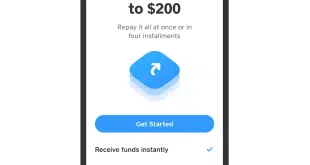Tech behemoths Google, Amazon, and Apple, goliath retailers Walmart and Target, and PayPal, all support the Federal Reserve providing faster payments via its FedNow service, slated for introduction by 2024. Each of them, however, would howl in protest if Washington proposed competing with their business or helping would-be competitors.
Fearing The Clearing House will dominate the market, community banks, too, want the central bank to provide an instant-payments system. In contrast, large banks’ objections to FedNow have been muted. The Fed is their regulator.
The Fed contends it “would provide the safest and most efficient method for interbank settlement of faster payments…” Why, however, presume the central bank would be safer or more efficient, much less more innovative, than marquee private-sector payment systems like Mastercard, Visa, TCH, Fidelity National Information Services (FIS), and Fiserv?

The central bank is a quasi-government entity whose track record has been atrocious. It has, however, been politically adept, successfully cultivating public trust and an aura of being above politics. Economist Milton Friedman didn’t buy it. He observed “No major institution in the U.S. has so poor a record of performance over so long a period as the Federal Reserve, yet so high a public reputation.”
The Fed has failed miserably at its most important role: maintaining stable prices. From 1792 to 1912, U.S. prices rose 3%. From the Fed’s 1913 creation to 2013, prices rose a whopping 2,380%. Further, on its own prerogative, the Fed in 2012 started targeting 2% inflation, flagrantly flouting its mandate to pursue stable prices. Stable prices means zero inflation, not prices doubling every 35 years.
Moreover, the Fed failed to anticipate the financial crisis. In March 2007, Fed Chairman Ben Bernanke told Congress the subprime mortgage crisis was “contained.” That May, Bernanke declared “We believe the effect of the troubles in the subprime sector on the broader housing market will likely be limited, and we do not expect significant spillovers from the subprime market to the rest of the economy or to the financial system.” Reality intruded.
Likewise, the Fed’s assiduously nurtured notion that only it can ensure ubiquitous and equitable faster-payments access is a chimera. Interoperability and competition will ensure both. TCH is slowly expanding its reach. Mastercard and Visa directly and indirectly connect with most banks. Both global networks could provide ubiquitous real-time payments. Additionally, Fiserv and FIS serving thousands of U.S. banks could be formidable providers of faster payments.
Furthermore, FedNow’s announcement will slow faster-payments adoption by causing many smaller banks to wait. The central bank says it will be available in 2023 or 2024. Worryingly, FedNow will discourage private-sector payment systems from investing and more vigorously competing in instant payments.
In faster payments, at least a handful of competing, interoperable, private-sector real-time payment systems, dynamically marked to market, would be the best outcome. Chair Jerome Powell should use his bully pulpit to encourage more private-sector competition and consider spinning off the Fed’s existing ACH, Fedwire, and check-processing operations rather than expanding its payment-processing footprint.
The Fed should stay out of activities properly and better handled by the private sector. And Congress should circumscribe its payments role.
—Eric Grover, principal at Intrepid Ventures, Minden, Nev.




